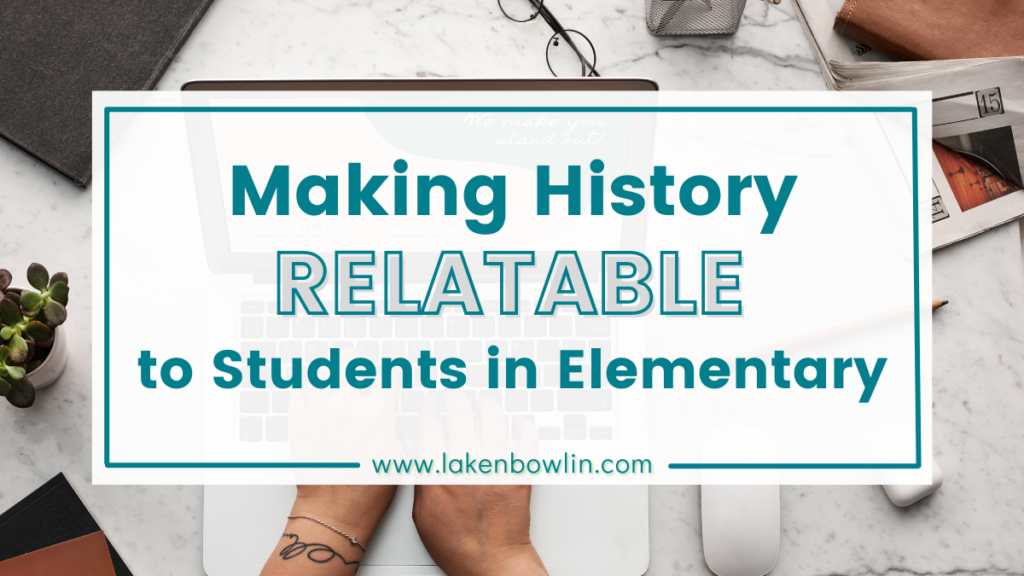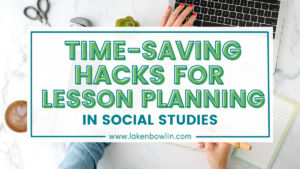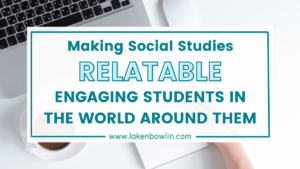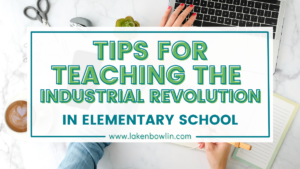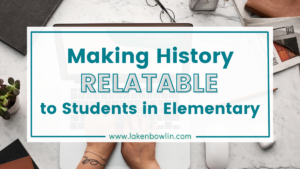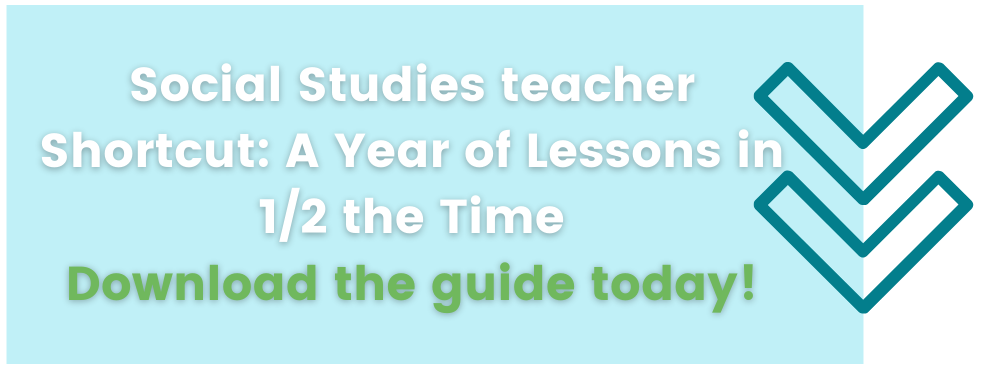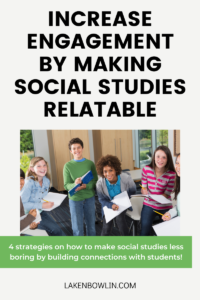 Like so much of school, it is important that we make sure our lessons in social studies relatable to students. If we don’t make the effort to make it relatable, students won’t retain the information. And isn’t the whole goal of a well-rounded education meant to be teaching life lessons and making connections? But how should we really think through our lessons to help make connections?
Like so much of school, it is important that we make sure our lessons in social studies relatable to students. If we don’t make the effort to make it relatable, students won’t retain the information. And isn’t the whole goal of a well-rounded education meant to be teaching life lessons and making connections? But how should we really think through our lessons to help make connections?
Are you looking for planning resources that are easy to use, minimal prep, and ready at your fingertips? I have created a planning document for upper-elementary social studies teachers, and you are definitely going to want to go check it out! 👀 I have pacing, linked resource ideas, and essential questions ready to go for you. If you teach in the upper elementary classroom, there is something for you in that document. What are you waiting for? Go check it out HERE!
1. Build on Prior Knowledge to Make Social Studies Connect
This is a bit of common knowledge, we all know our lessons should build on prior knowledge – but how often do we make it a focus when planning our lessons? If you’re going through history chronologically, point to students how events built on each other. Keep timelines that you can build on around the room. Use interactive notebooks so students can refer to their notes as reminders.
Although this seems very simple, students can often see history as separate events, and many textbooks fail to make the connection of events, people, and places. A timeline built together, or a blank map labeled throughout the year are great ways to make visual connections to help students
2. Connect the Past to Present
Similar to building on prior knowledge, show students how the events they are learning about relate to their present. It doesn’t have to be big sweeping gestures. Think about how a historical journey happened and how they would make the same journey today. This makes for great compare and contrast writing prompts and anchor charts.
If you have lots of visual learners, look up on Google maps what historical locations look like now. You can also use Google Maps to map out the journey to help students better grasp the distance of traveling adventures back then.
Find first-hand accounts of the events you are learning about. These can also be in a narrative form if the first-hand accounts are difficult to read. Allowing students to read about the event from an actual person gives them a chance to relate to them and connect with a real person.
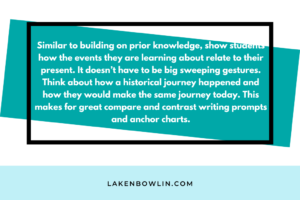
3. Teach Practical Life Lessons to Make Social Studies Relatable
Find broader topics that students can relate to when you study historical events. Compare economic structures with a penny jar or activity with paper money. Students can problem solve and practice collaboration during lessons, develop critical thinking skills, and work on communication skills. Life skills and the practical lessons we can glean from studying history is what really make something stick – because we use it in our lives.
4. Learn from Past Mistakes
In addition to life lessons, studying and understanding mistakes of the past help students learn to make better choices in their future. Break down civil rights into terms of bullying, for example. History can be dark and disturbing, but it doesn’t mean we need to shy away from it. Give students the opportunity to discuss tried solutions, what worked, what failed, what errors were made, how people overcame hurts and obstacles, and the importance of perseverance (which coincidentally would make a good topic for point 3).
Taking the time to showcase those connections will bring home student understanding. More than just knowing information for your class, a test, or other assessment, we should strive to make sure students really understand the importance of what they’re learning. Making social studies relatable can be a challenge depending on the topics you are currently teaching, but I believe that the effort is well worth it in the end. Your students will retain more information, stay engaged, and even be able to start making some of the connections as they go if you build a strong social studies routine!
Did you miss it? It’s okay, I got you! I know you are overwhelmed with planning engaging lessons across all your subjects, so don’t make social studies become another pain point for you. Download your Social Studies Teacher Shortcut: A Year of Lessons in ½ the Time to get all your planning organized and in one place.
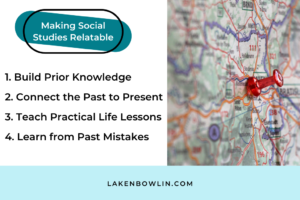
Related Articles
5 Strategies for Teaching Social Studies Vocabulary Words in the Classroom
5 Tips for Teaching Current Events in Upper Elementary Classrooms
5 Activities for Using Task Cards During Your Social Studies Class
